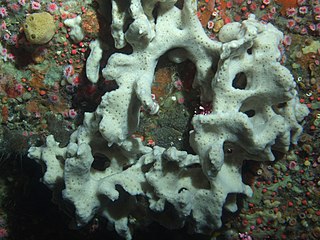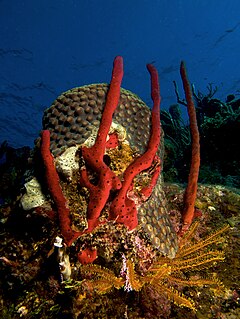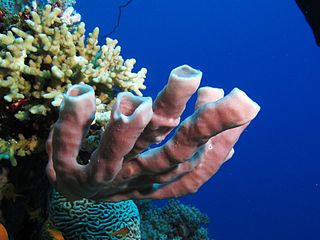| Stylissa | |
|---|---|
 | |
| Stylissa carteri | |
| Scientific classification | |
| Kingdom: | Animalia |
| Phylum: | Porifera |
| Class: | Demospongiae |
| Order: | Scopalinida |
| Family: | Scopalinidae |
| Genus: | Stylissa Hallmann, 1914 |
| Species | |
See text | |
Stylissa is a genus of sponges in the family Scopalinidae. [1]
A genus is a taxonomic rank used in the biological classification of living and fossil organisms, as well as viruses, in biology. In the hierarchy of biological classification, genus comes above species and below family. In binomial nomenclature, the genus name forms the first part of the binomial species name for each species within the genus.

Sponges, the members of the phylum Porifera, are a basal Metazoa (animal) clade as a sister of the Diploblasts. They are multicellular organisms that have bodies full of pores and channels allowing water to circulate through them, consisting of jelly-like mesohyl sandwiched between two thin layers of cells. The branch of zoology that studies sponges is known as spongiology.
Scopalinidae is an family of demosponges in the subclass Heteroscleromorpha. It is the only family in the monotypic order Scopalinida.














